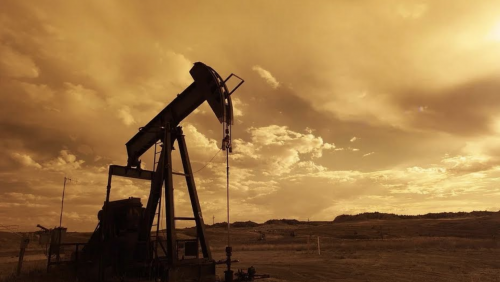Brownfields – Abandonment in Bankruptcy Amidst the Covid-19 Pandemic
November 9, 2020 by Shamila Kara

An oil pump, presumably extracting oil in a parcel of barren land.
Brownfields are formed when a property’s use or development has been curtailed by the presence of environmental contaminants. There are over 450,000 Brownfields in the United States today and these sites are home to major environmental pollutants. How does bankruptcy contribute to this issue and why should some states and communities be more concerned than others?
Brownfields are formed when a property’s use or development has been curtailed by the presence of environmental contaminants.[1] The Environmental Protection Agency (EPA) estimates that there are over 450,000 brownfields in the United States today.[2] Environmental contaminants in brownfields can include lead, petroleum, asbestos, and polycyclic aromatic hydrocarbons (PAHs), among other harmful chemicals.[3] Laden with such noxious contaminants, the products of years of mining, drilling, refining, and various manufacturing on the land, these properties must undergo clean-up before further use.[4]
A tangential driver of these brownfields lies in decisions made during bankruptcy. Under Chapter 5 of the United States Bankruptcy Code, the trustee can file a motion to abandon company assets that are considered “burdensome” or of “inconsequential value” to the bankruptcy estate.[5] A trustee may find an asset burdensome because of environmental contamination that is too costly to address. Abandonment of an asset can create or catalyze a host of environmental issues that raise health, safety, and economic concerns for surrounding communities.[6],[7] The prevalence of these decisions to abandon properties has caught the attention of environmental experts, activists, and government agencies.[8]
Depending on the type of property that is abandoned, there may be toxic contamination that raises health and safety concerns. Contaminating elements can seep into the water table, affecting the water sources of local communities and the larger ecosystems of animals, insects, and birds.[9] In addition to the health and safety consequences of abandoned toxic property, there is a broader question of land use efficiency and the impact of brownfields on surrounding communities.[10] Vacant, abandoned land that needs to be repurposed can remain in such a state because the clean-up and revitalization costs for state and local authorities can be immense, and sometimes cost-prohibitive.[11] Ultimately, vacant, abandoned land, left as such, can contribute to economic blight in communities by preventing development.[12]
Safeguards against the environmental concerns caused by abandonment can come in the form of state and statutory laws.[13] In Midlantic Nat. Bank v. N.J. Dep’t of Envtl. Prot., the Supreme Court held that abandonment may not take place where it defies “a state statute or regulation that is reasonably designed to protect the public or safety from identified hazards.”[14]However, this holding has been interpreted in varying degrees, which means that many states are still vulnerable to the environmentally harmful consequences of abandonment, especially at risk states like Pennsylvania that have a high number of oil wells.The compromised oil economy places pressure on oil-dependent businesses, increasing the likelihood of bankruptcy activities that can lead to abandonment.[15] Oil wells, if abandoned, leave behind pollutants such as petroleum, that can trigger safety concerns and require high revitalization costs.[16]
Abandonment is more topical than ever in light of the economic effects of COVID-19. Due to an increase in restructuring and potential bankruptcies amidst the pandemic,[17] abandonment remains an attractive option for trustees. There is awareness among law firms of the importance of managing environmental concerns at various levels.[18] For example, the firm Holland & Knight LLP is encouraging those involved in large corporate bankruptcies to stay aware of the environmental concerns of abandonment.[19] Reminders to clients are important, but as with most environmental issues, preventing the consequences triggered by abandonment requires change at multiple levels. One of the required changes is an effective EPA brownfields program. The EPA’s current Brownfields Program offers funding and assistance to state and local entities to restore and reuse contaminated properties.[20] The efficacy of this program remains to be seen. In the meantime, abandoned brownfield properties will continue to be a concern that environmental experts, enthusiasts, and the affected communities themselves, need to address.
[1] EPA, Overview of EPA’s Brownfields Program, https://www.epa.gov/brownfields/overview-epas-brownfields-program, archived at https://perma.cc/CSJ7-MCVD (Last visited Oct. 10, 2020).
[2] Id.
[3] EPA, Environmental Contaminants Often Found at Brownfield Sites, https://www.epa.gov/sites/production/files/2020-07/documents/assessing_brownfield_sites.pdf, archived at https://perma.cc/5255-CPMJ (Last visited Oct. 10, 2020).
[4] EPA, supra note 1.
[5] 11 U.S.C.§ 554(a).
[6] Dianne R. Phillips & Maria de law Motte, When Considering Bankruptcy, Don’t Forget About Environmental Obligations, Holland & Knight (Sep. 17, 2020), https://www.hklaw.com/en/insights/publications/2020/09/when-considering-bankruptcy-dont-forget-about-environmental archived at https://perma.cc/B4ED-VYCD. (Last visited Oct. 10, 2020).
[7] Robert J. Burnett & Brendan A. O’Donnell, Driller Bankruptcy Could Raise Environmental Concerns for Landowners, Houston Harbaugh Attorneys at Law, https://www.hh-law.com/articles/oil-and-gas-articles/driller-bankruptcy-could-raise-environmental-concerns-for-landowners/, archived at https://perma.cc/ASM3-TQT9 (Last visited Oct. 10, 2020).
[8] American Bankruptcy Institute, Abandonment of Contaminated Land A Toxic Quandary, ABI Journal (Sep. 2005), https://www.abi.org/abi-journal/abandonment-of-contaminated-land-a-toxic-quandary, archived at https://perma.cc/VUX2-PH7S (Last visited Oct. 10, 2020).
[9] EPA, Getting Up to Speed: Ground Water Contamination, https://www.epa.gov/sites/production/files/2015-08/documents/mgwc-gwc1.pdf, archived at https://perma.cc/5YWQ-Q6PJ (Last visited Oct. 10, 2020).
[10] Mitigating Neighborhood Blight, Edge PD&R, https://www.huduser.gov/portal/pdredge/pdr-edge-featd-article-012218.html, archived at https://perma.cc/36R6-GELZ (Last visited Oct. 10, 2020).
[11] American Bankruptcy Institute, supra note 9.
[12] Mitigating Neighborhood Blight, supra note 11.
[13] Phillips & de law Motte, supra note 7.
[14] Midlantic Nat. Bank v. N.J. Dep’t of Envtl. Prot., 474 U.S. 494, 507 (1986).
[15] Burnett & O’Donnell, supra note 8.
[16] EPA, supra note 3.
[17] Burnett & O’Donnell, supra note 8.
[18] Id.
[19] Id.
[20] EPA, Brownfields, https://www.epa.gov/brownfields, archived at https://perma.cc/U584-R83K (Last visited Oct 10, 2020).

